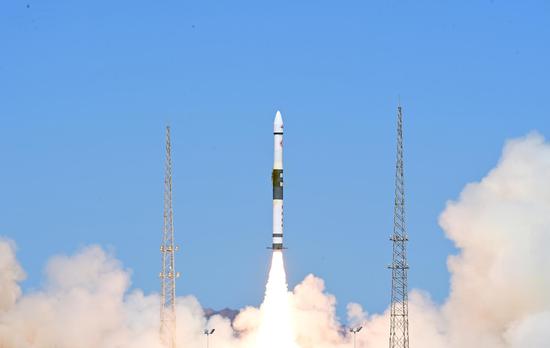(ECNS) -- The Five-hundred-meter Aperture Spherical Radio Telescope(FAST) in south China’s Guizhou Province, has observed for the first time in the world the phenomenon of sub-millisecond quasi-periodic oscillations in microquasars at low radio frequencies.
It reveals a direct correlation between quasi-periodic oscillation and relativistic jets in black hole systems, National Astronomical Observatories of Chinese Academy of Sciences(CAS), announced on Thursday.
This phenomenon, which reveals the complex dynamics of black hole jets, is vividly referred to by astronomers as the "pulsar" of black hole radio emissions.
The discovery was accomplished through a collaborative effort jointly led by the Department of Astronomy at Wuhan University and the National Astronomical Observatories of China, CAS.
Astronomers state that the discovery of this "pulsar" of black hole radio emissions holds significant scientific importance in unraveling the origin and dynamic processes of relativistic radio jets from compact celestial bodies. It is expected to open up new avenues for observing and theorizing black hole radio emissions, paving the way for further advancements in this field of study.
The research findings were published online in the international academic journal Nature on Wednesday night (Beijing Time), under the title “Sub-second periodic radio oscillations in a microquasar.”


















































 京公网安备 11010202009201号
京公网安备 11010202009201号